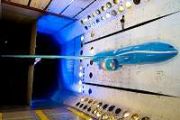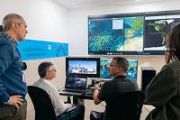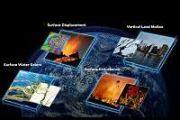
Copernical Team
Marking one year until BepiColombo reaches Mercury

The ESA/JAXA BepiColombo mission has been cruising towards Mercury since October 2018. With just one year to go until it arrives at its destination, what has the mission achieved so far? And what can we expect from its two spacecraft after they enter orbit around the Solar System’s smallest and least-explored rocky planet?
'Worms in space' experiment aims to investigate the biological effects of spaceflight
Verifying that you are not a bot
Moss spores survive 9 months outside International Space Station
Verifying that you are not a bot
Comet sparks scientific fascination, online furor over 'alien' origins
Verifying that you are not a bot
Eumetsat takes control of Sentinel-6B

Eumetsat takes control of Sentinel-6B
ESA awards excellent suppliers

The European Space Agency (ESA) brings public and ESA-wide recognition of the outstanding performance of European companies working in the frame of ESA programmes and projects.
NASA releases detailed images of rare interstellar comet passing through solar system (Updated)
Verifying that you are not a bot
Frontgrade unveils SADA-10 drive to increase efficiency for LEO and MEO satellites
 Frontgrade Technologies has introduced the SADA-10, a compact Solar Array Drive Assembly designed to support precise solar array positioning for Low Earth Orbit and Medium Earth Orbit space missions. Built using knowledge acquired from previous flight systems, the SADA-10 features a hybrid stepper motor paired with a harmonic gear drive, delivering high torque, zero backlash, and 0.015-degree po
Frontgrade Technologies has introduced the SADA-10, a compact Solar Array Drive Assembly designed to support precise solar array positioning for Low Earth Orbit and Medium Earth Orbit space missions. Built using knowledge acquired from previous flight systems, the SADA-10 features a hybrid stepper motor paired with a harmonic gear drive, delivering high torque, zero backlash, and 0.015-degree po Faraday Effect Reveals Magnetic Role of Light in New Study
 Researchers at the Hebrew University of Jerusalem have established that the magnetic field component of light actively influences the Faraday Effect. The team, led by Dr. Amir Capua and Benjamin Assouline of the Institute of Electrical Engineering and Applied Physics, provided theoretical proof that the oscillating magnetic field of light contributes directly to the Faraday Effect, challenging a
Researchers at the Hebrew University of Jerusalem have established that the magnetic field component of light actively influences the Faraday Effect. The team, led by Dr. Amir Capua and Benjamin Assouline of the Institute of Electrical Engineering and Applied Physics, provided theoretical proof that the oscillating magnetic field of light contributes directly to the Faraday Effect, challenging a Astrophysics study sets new bounds on speed of light across photon energies
 In 1887, Michelson and Morley conducted a pivotal experiment, searching for evidence that Earth's motion could alter the speed of light. Their null result was instrumental for Einstein, who soon proposed that light speed remains fixed for all observers, foundational for the theory of special relativity. This concept, known as Lorentz invariance, asserts that the laws of physics hold true regardl
In 1887, Michelson and Morley conducted a pivotal experiment, searching for evidence that Earth's motion could alter the speed of light. Their null result was instrumental for Einstein, who soon proposed that light speed remains fixed for all observers, foundational for the theory of special relativity. This concept, known as Lorentz invariance, asserts that the laws of physics hold true regardl 



































